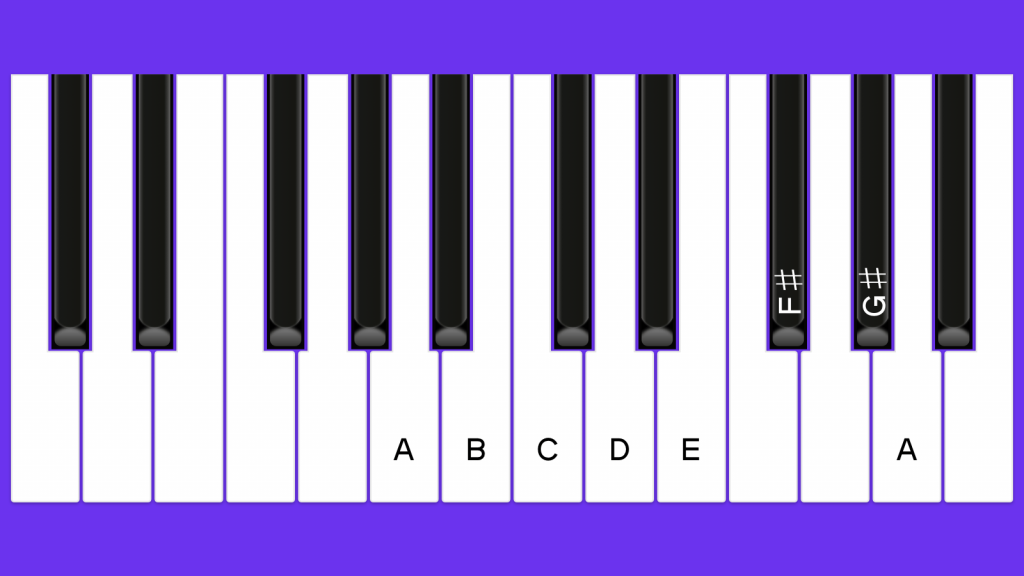Today we’re going to be talking about the melodic minor scale! Perhaps you’ve heard of this scale before, and perhaps you’re learning about it for the first time just now. Melodic minor scale is a useful tool in music composition known for its unique characteristics. Unlike the natural minor scale, melodic minor introduces variations depending on whether you are ascending or descending. That’s right, kids, time to expand your musical horizons. Don’t worry, though — we can use our prior knowledge of basic scales to enhance our musical vocabulary! Let me show you…
Review: Scales, scales, and more scales
First, let’s take a quick refresher course on some music theory terminology. We know about major and minor, right? We’ve heard this in reference to chords, scales, harmony, etc. We have major and minor chords just as much as major and minor scales. However, unlike it’s major counterpart, the minor scale has a few differentiations — natural minor being one of them. That’s right — there is one major scale, but there are three minor scales: natural, harmonic, and melodic.
In its simplest form, the natural minor scale follows this pattern of whole and half steps: W-H-W-W-H-W-W (where W = whole step, H = half step). For example, in A natural minor: A, B, C, D, E, F, G, A.
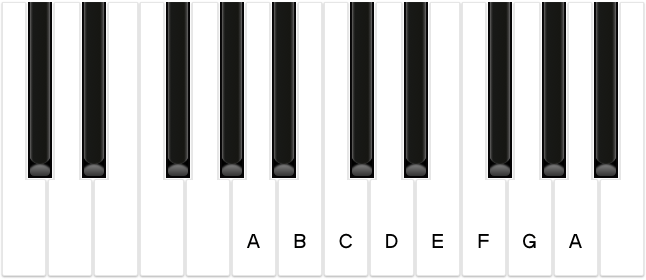
A few things to remember before we move on.
- You’re going to be seeing a lot of these diagrams and scale formulas. Don’t let them scare you. We’re going to learn the scale in their most rigid and basic states just as a means of finding our musical footing. But music is an art form, after all. When playing or composing, you may not use each of these scales in their set form. Rules oftentimes are meant to be broken. That being said, you have to learn the rules before you can break them.
- Let’s say you’re the kind of student who benefits more from hands-on learning and doesn’t want to just ‘read’ about scales but instead PLAY them. In that case, check out this melodic minor lesson from Playground Sessions A-lister Phil Anderson!
Ok, now let’s spice things up a bit with the harmonic minor scale.
Imagine the natural minor scale putting on its party attire and stepping into a vibrant world of increased tension and drama. The harmonic minor scale retains the melancholic essence of the natural minor but introduces a twist with a raised seventh degree: W-H-W-W-H-WH-H. (Note: our penultimate interval is written as “WH”. This is because the sixth and seventh degrees of this scale are three notes apart. Therefore, you have to jump up a whole step plus an additional half step. In this instance, we are going from F up to G# which is three notes away.) See below:

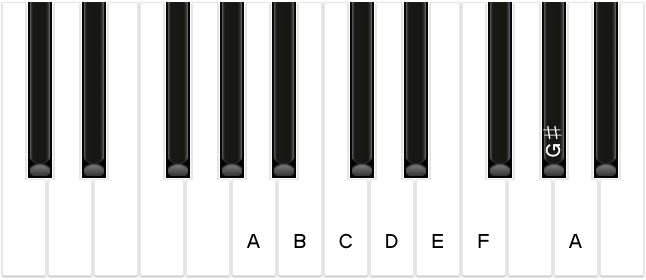
See the difference? Do you hear the tension building? That raised seventh note adds a whole new dimension of flavor, giving compositions a sense of drama and passion! We can think of it simply as raising that seventh degree OR we can think of it as “borrowing from the major scale of the same key”, which in this case is A. In other words, harmonic minor (and melodic minor!), borrows the raised seventh degree (also known as the leading tone) from the major scale of the same key (also known as the parallel major).
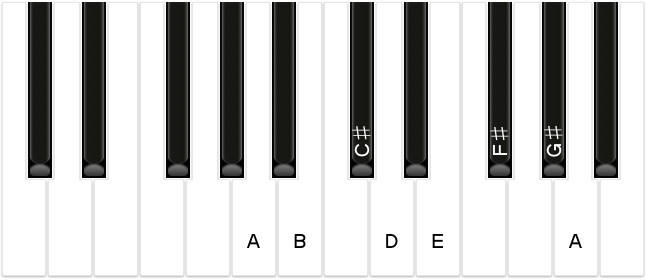

Arriving at melodic minor (dun dun duuuuuun)
Now that we’ve refreshed our understanding of the natural and harmonic minor scales, let’s do what we came to do: talk about the melodic minor scale! This scale takes the best of both worlds — the smooth flow of the natural minor scale and the heightened tension of the harmonic minor
scale — and merges them into a dynamic and expressive powerhouse. Take a look (remember – this scale has a different form ascending as it does descending!):
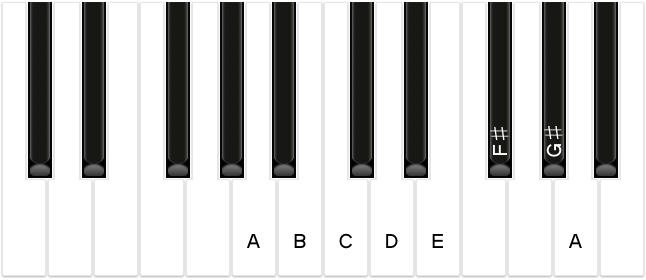

Whoa. So a couple things right off the bat: First, when ascending, the scale looks like the major scale, but with a lowered third. And when descending, the scale looks just like our old friend, natural minor! In this way, we can see how the melodic minor scale is an amalgam of a few different scales, taking the best and most expressive parts of the major, natural minor, and harmonic minor scales, all the while adding its own flair and voice.
Of course this scale has its own formula, as all scales do. In this case, ascending would be W-H-W-W-W-W-H (A, B, C, D, E, F#, G♯), just like harmonic minor but with a raised 6th. And descending would be W-W-H-W-W-H-W (A, G, F, E, D, C, B, A), exactly like natural minor.
(Quick note: you may be asking, “Why are you showing me all these formulas?” Well, I’ve only shown you these scale in the key of A. But say you’re playing or writing in the key of Bb – then you need to know how to make these same scales in that new key! And the only way to know how to do that is by not just familiarizing yourself with the scale, but also how to make the scale.
Wanna go above and beyond? Then, just for kicks, the next time you are in front of the piano, take a scale you know pretty well and try it in a key you’ve never used before. This process, known as transposing or transposition, is one of the most direct ways to develop musical skills and versatility!)
Practical applications of melodic minor
Why use the melodic minor scale?
It’s sort of jarring to see a scale that sounds different one way as it does the other. We all knew it was coming, we sure mentioned it enough beforehand, but to see it for real is something else. It’s also quite subtle too, right? It has a certain flow to it. But remember – this is on purpose! The main reason for this being that early adopters of the scale simply thought it sounded better – the lowered 6th and 7th degrees on the way down, they thought, felt stronger harmonically. All these years later, many still agree of course, as it literally adds a whole new dimension to its tonal qualities. Composers often employ the melodic minor scale to introduce subtle shifts in tonality and mood within a piece. The raised sixth and seventh degrees provide composers with additional harmonic and melodic possibilities, allowing for compositions that convey both depth
and emotional nuance.
Melodic minor examples in songs
Famous compositions that feature the melodic minor scale include jazz standards like “Autumn Leaves” and classical pieces such as Mozart’s “Piano Concerto No. 24 in C minor, K. 491.”
A more popular example of the scale would be on “Yesterday” by The Beatles:
Listen to the ascending melody on “All my troubles seemed to far away,” (this phrase has a raised seventh degree). But on the next line, “Now it looks as though they’re here to stay”, the melody is descending and has a lowered seventh degree. See? There is a method to this madness. In practice, melodic minor becomes a compositional tool to be used at the composers need and/or desire.
Let the melodic magic unfold!
In a nutshell, the melodic minor scale isn’t just a scale — it’s a gateway to musical adventures waiting to be explored. Melodic minor serves as a bridge between the natural minor and major scales, offering musicians a palette of colors to enrich their compositions. Whether you’re a beginner itching to try something new or a seasoned player looking to spice up your repertoire, the melodic minor scale is your ticket to musical bliss.
If by some chance you want to go further in depth with this subject (and have some time to kill), check out this video from our favorite internet music guru Rick Beato:
Frequently asked questions
What is the Melodic Minor Scale?
Melodic Minor is a variation of the minor scale. This scale is unique in how it changes its shape when ascending and descending:
- When ascending: The scale is like a natural minor scale but with the 6th and 7th degrees raised by a half step. For example, in A melodic minor ascending, the notes are A, B, C, D, E, F♯, G♯, A.
- When descending: It typically returns to the natural minor form, so in A melodic minor descending, it would be A, G, F, E, D, C, B, A.
What is the Natural Minor Scale?
Natural Minor can be considered the “main” version of the minor scale, as other iterations of the minor scale are usually based off of it. Its pattern of whole and half steps is W, H, W, W, H, W, W. So in A natural minor, for example, the notes are A, B, C, D, E, F, G, A.
What is the Harmonic Minor Scale?
Harmonic Minor is another variation of the minor scale, distinguished by its raised 7th degree. Its pattern of whole and half steps is W, H, W, W, H, WH, H. Thus, In A harmonic minor, the notes are A, B, C, D, E, F, G♯, A.
To turn a major scale into its minor counterpart (also known as the parallel minor), three of the notes need to be lowered: the third, the sixth, and the seventh. By lowering these notes, the scale will now have a minor third, sixth, and seventh, which are crucial in achieving that “minor” sound. For example, by lowering the third, sixth, and seventh degrees of A major (A, B, C#, D, E, F#, and G#), it will become A natural minor (A, B, C, D, E, F, and G). From there, the scale can be adjusted to either harmonic or melodic minor by applying the relevant criteria.
